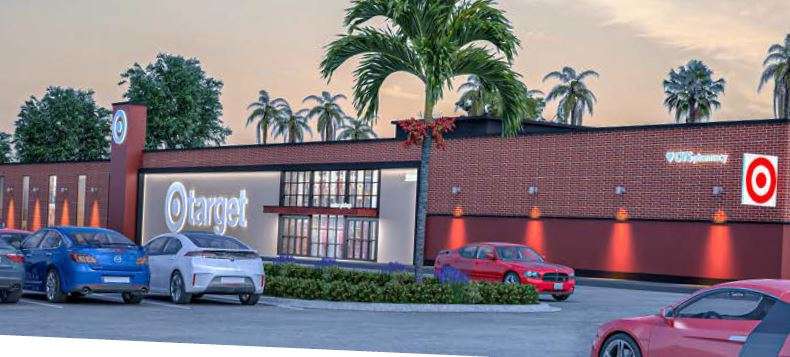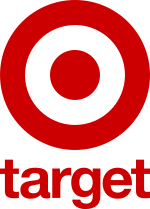
Target NNN Properties for Sale
Are you looking to buy or sell a Target Ground Lease Property, or NNN Lease Target Property for passive investment? If you would like to buy or sell Net Lease Target Properties, please feel free to send us an email to info@nnndeals.com and we will get back to you quickly.
 | |
| Formerly |
|
|---|---|
| Type | Public |
| Industry | Retail |
| Founded |
|
| Founders |
|
| Headquarters | |
Number of locations | |
Area served | United States, Canada (formerly, see Target Canada) |
Key people | Brian C. Cornell (Chairman & CEO) |
| Products |
|
| Revenue | |
| Total assets | |
| Total equity | |
Number of employees | 409,000 (2020)[2] |
| Parent |
|
| Subsidiaries | Shipt |
| Website | |
Target: One of America’s Renowned Discount Store Retailer
The Target Corporation, Founded by George Dayton is headquartered in Minneapolis, Minnesota is familiar to the customers as Target. It is the second-largest discount store retailer in the United States, behind Walmart. The company was started in June 1902 under the name Goodfellow Dry Goods and was renamed as the Dayton’s Dry Goods Company in 1903 and later the Dayton Company in 1910 and the Dayton Corporation in 1967. The name Target was christened on January 14, 2000.
After its merger with the J.L. Hudson Company in 1969, it was renamed as the Dayton-Hudson Corporation. As a result of the merger, it held ownership of several department store chains including Dayton’s, Hudson’s, Marshall Field’s, and Mervyn’s. The company has found success as a cheap-chic player in the sales of products ranging from beauty and health products to housewares and small appliances. The company operates with a purpose to fulfill its slogan, ‘Expect More. Pay Less’.
Current Market Value
The company is led by Brian C. Cornell, the CEO and Chairman along with John Mulligan, The EVP and COO. As of 2016, it has employed 341,000 staff members to work across their 1,803 stores. The company was ranked #39 in the list of World’s Most Admired Companies and #38 in the list of Fortune 500 companies by the Fortune Magazine. It was also ranked in different positions in various sectors in the list of Forbes Global 2000 companies as #164 in Global 2000, #175 in Profit, #88 in Sales, #615 in Assets, #184 in Market value and #81 World’s Most Valuable Brands.
The company operating under the TGT at the NYSE, reported revenue of US$ 73.785 billion by the end of Fiscal Year 2015. By the end of the same year, it had an operating income of US$ 5.53 billion along with a net income of US$ 3.363 billion. TGT’s total equity and sum of assets by the end of 2015, were US$ 12.957 billion and US$ 40.262 billion respectively.
History
Dayton purchased the Goodfellows department store from its owner Reuben Simon in 1902, and named it as Dayton’s in the year 1903. The company’s first acquisition was the Minneapolis-based jeweler J.B. Hudson & Son right before the Wall Street Crash of 1929. Its jewelry store operated at a net loss during the Great Depression, which was balanced by the department store.
The concept of upscale discount retailing was implemented by John F. Geisse, while he was working for the Dayton Company. The company opened three additional units in the same year as it implemented this new concept, under the name Target Stores and reported its first gain in 1965 with sales reaching $39 million.
It reached a total sales of US$ 200 million in the 1970s, during the period it merged with the J.L. Hudson company and renamed as Dayton-Hudson’s. In 1999, the company’s revenue increased to $33.7 billion, and net income reached $1.14 billion, passing $1 billion for the first time and nearly tripling the 1996 profits of $463 million.
Store Formats
The company operates under three store formats, which are listed below:
- Targets: Present-day Target stores are roughly 135,000 square feet and mostly sell general merchandise that includes headlines and soft lines.
- Super Targets: TGT’s first SuperTarget hypermarket opened in Omaha, Nebraska in 1995, with the inclusion of a full grocery department along with the increased number of checkout lanes, price scanners, larger aisles and more.
- Flexible format Target: The first stores were opened in July 2012, in Chicago, Los Angeles, and Seattle and are roughly 80,000 square feet.
Target reported its fiscal first-quarter earnings in 2010 to have increased 29% in net income. Along with beating up the stocks of it is rivaled, TGT is also rising high in the competition. In case you are looking to invest in shares, Target is one of the trustworthy companies that you could consider.



